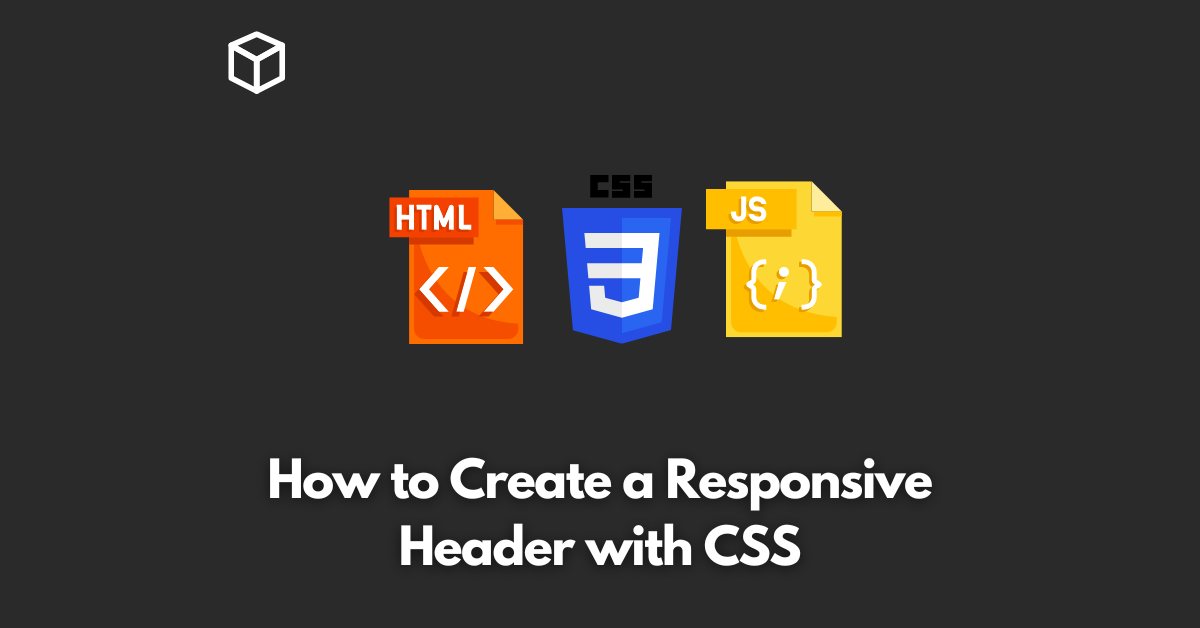In this tutorial we will be discussing how to create a responsive header using CSS.
A responsive header is an essential component of a website as it adjusts its size and appearance according to the screen size of the device it is viewed on.
What is a Responsive Header
A responsive header is a header that adjusts its size and appearance according to the screen size of the device it is viewed on.
It is an important aspect of responsive web design as it provides a consistent and user-friendly experience to the website visitors, regardless of the device they use to access the site.
CSS Media Queries
CSS media queries are used to apply specific CSS styles based on the characteristics of the device such as screen size, device orientation, and more.
In our case, we will be using media queries to create a responsive header.
HTML Markup for the Header
Here is the HTML markup for the header:
<header>
<nav>
<ul>
<li><a href="#">Home</a></li>
<li><a href="#">About</a></li>
<li><a href="#">Services</a></li>
<li><a href="#">Contact</a></li>
</ul>
</nav>
</header>
CSS Styles for the Header
Here is the CSS code for creating a responsive header:
header {
background-color: #333;
color: #fff;
padding: 20px;
}
nav ul {
display: flex;
justify-content: space-between;
list-style: none;
margin: 0;
padding: 0;
}
nav li {
display: inline-block;
margin-right: 20px;
}
nav a {
color: #fff;
text-decoration: none;
}
@media (max-width: 767px) {
header {
text-align: center;
}
nav ul {
display: block;
}
nav li {
display: block;
margin-right: 0;
}
}
Explanation of the CSS Code
In the CSS code, we have defined the header styles including background color, text color, and padding.
Then we have defined styles for the navigation menu including the display of the navigation menu as a flexbox, justification of the items, removal of the list style, and removal of margins and padding.
Next, we have defined the styles for the navigation links including the text color and removal of the text decoration.
Finally, we have used media queries to apply specific styles for devices with screen sizes smaller than 767 pixels.
The media query changes the text alignment of the header to center and the display of the navigation menu from a flexbox to a block.
Conclusion
In conclusion, creating a responsive header with CSS is a simple and straightforward process.
By using media queries, we can apply specific styles based on the characteristics of the device and provide a consistent and user-friendly experience to the website visitors.
We hope this tutorial was helpful in showing you how to create a responsive header with CSS.
If you have any questions or comments, please feel free to leave them below.




